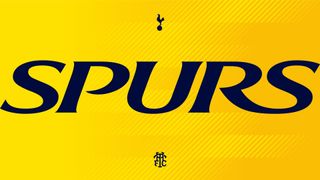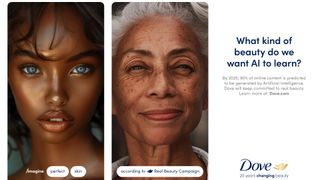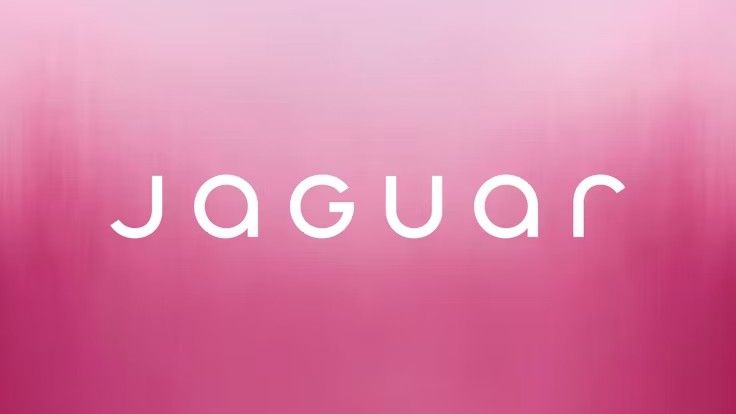Logo design is more than a visual identifier; it’s the cornerstone of a brand’s identity. But for much of the 2010s and early 2020s, it largely felt trapped in a cul-de-sac of lifeless sans-serif minimalism.
However, as we predicted in our 2024 logo trends piece, that’s all started to change. Over the last 12 months, we’ve seen graphic designers start to push boundaries once more; blending tradition with modernity to craft logos that connect on a deeper level.
To get a sense of where this is all heading, we’ve spoken to a range of designers up and down the industry. Their predictions for logo trends in 2025 centre around a growing focus on storytelling, human connection and adaptive design systems. Meanwhile, if you want to see the broader context behind all these shifts, check out our roundup of the best logos by decade.
01. Wordmarks with a twist

Let’s start with some welcome positivity. Beth Andlaw, co-founder of FORM Brands Studio, is upbeat about how logo design is evolving as we enter the second half of the 2020s.
“As we move towards 2025, it’s a great time for logo design,” she enthuses. “The industry is becoming braver and the result is some weird and wonderful designs starting to emerge. Minimalism is still leading the way, but the focus is shifting. The best designs aren’t just sleek; they’re clever and meaningful, telling a story with as little as possible.”
What might that look in practice? “A trend I hope to see carry on into next year are stripped-back wordmarks with a clever twist,” says Callum Richards, senior designer at How&How. “A good example is Koto’s new logo for Kit [the email-first operating system for creators previously known as ConvertKit]. These are always a nice surprise and manage to pack so much into so little.”
02. Breaking away from cliche

For many years, we’ve heard the same complaint from readers when we showcase new logo designs: “it’s too generic”. But Mike Goldsworthy, creative lead at creative lead at ilk agency believes that’s starting to come to an end. “Companies and organisations have been ditching the same-old-same-old recently, and I think that this is a trend that’s only going to grow,” he says.
“Take the automotive world, for example. For years, brands have leaned into a fleet of masculine, angular, chiselled logos–designs that wouldn’t look out of place on a men’s razor brand. Enter Jaguar’s in-house design team. Jaguar’s latest rebrand is one of the most talked-about this year, and they’ve fully embraced a more approachable and inclusive design. Though, in doing so, some might say they’ve left the heart and soul of Jaguar on the back seat.”
03. Experimental typography

Katy Hopkins, executive creative director at Iris, predicts that a lot more bold, expressive fonts will make their way into logo design in 2025. “I think we will see different experimental typography bring personality to brand identities,” she says. “Playing with shape, weight and motion to create unconventional fonts. Creating stretched effects and fluid formations. It’s a great way to catch attention and make a statement.
“Good examples include Benoît Bodhuin’s Harber typeface, the twisted type of Carl Cozier aka Holy Moly, Bollo Mollo’s outlined pixel font and this visual experiment by Jangsub Lee,” she adds.
04. Rise of retro

While the previous trend on our list is future-focused, Beth points to another trend taking logo design in the opposite direction. “We’re also seeing a growing love for nostalgia,” she explains.
And there’s a good reason for that. “Retro-inspired logos tap into something deeper, offering warmth and familiarity while still feeling relevant; creating an emotional connection that resonates. A recent standout is MotoGP’s recent rebrand, which elegantly combines vintage elements with a contemporary twist.”
Callum agrees. “I’ve always loved it when brands pull on the heritage and go against basic, sans-serif wordmarks and opt for classic but modern typography,” he enthuses. “It’s about reclaiming roots and bringing them into the present. Examples like the Spurs logo by Nomad or the Olympic Museum branding by Studio Blackburn show how this trend can evoke both history and relevance.”
05. Bold and chunky

Noticed how large logos are getting lately? Callum certainly has. “One logo trends I think might gain some traction is 2025 are bold, chunky wordmarks that take up every inch of a layout,” he says.
“A good example is the new logo for digital news portal MAD by Ba’ndo. Similarly, I’m expecting to see more logos that can adapt to create an entire design system, such New Kid’s work for Perpetual, a robotics company automating inventory management for healthcare workers.
06. Two paths to choose

Some of these logo trends seems to run counter to each other, so it’s clear that traffic is not all going in the same direction. However, Lucas Luz, art director at &Walsh, believes that they basically boil down to two potential directions for graphic designers.
“At &Walsh, we see two possible paths for logos in the coming years,” he explains. “One sees them becoming highly intricate, drawing on historical elements of the brand to evoke a sense of nostalgia and credibility. The other takes the complete opposite approach, with entirely typographic logos that allow the graphic system to take centre stage.”
07. Human connection

Whichever direction designers go with their logos in 2025, Beth believes that at the heart of all this is a focus on human connection. “A great logo isn’t just about looking good, it’s about feeling right,” she reasons. “Whether it’s through simplicity, bespoke details or a nostalgic touch, logos that are thoughtful and idea-driven will stand the test of time.
“As brands look to stay relevant, a balance of creativity, clarity and personality will make all the difference. In short, the future of logo design is about more than trends: it’s about designing with meaning.”
08. Making the logo smaller

Finally, we’ve talked about how logos are designed. But the ways they are used is also changing, believes Kate Moldan, account manager at Redpill.
“The days of showcasing large, bold logos across digital content are coming to an end,” she says. “Brands are increasingly prioritising the expression of their identity through language, behaviour, and authentic storytelling rather than relying heavily on logo visibility. Some examples are some recent examples are: Dove’s The Code and LEGO’s Play is Your Superpower campaign.
She explains that with influencers (who are now brands in their own right) collaborating with major companies, authenticity has become crucial. “Overly dominant logos risk alienating audiences and undermining the impact of the content,” she explains. “Influencer branding has also demonstrated that faces can serve as logos, with the personality, presence, and recognition of an individual often becoming more powerful than traditional branding elements.
“As we move into 2025, logo design will adapt to reflect this shift, focusing on synergy, human connection, and seamless integration, particularly in this fast-paced era of short-form content.”
For more on current trends, see our favourite typefaces from 2024.
